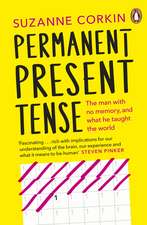Multisensory Object Perception in the Primate Brain
Editat de Marcus Johannes Naumer, Jochen Kaiseren Limba Engleză Paperback – 18 sep 2014
| Toate formatele și edițiile | Preț | Express |
|---|---|---|
| Paperback (1) | 1221.51 lei 6-8 săpt. | |
| Springer – 18 sep 2014 | 1221.51 lei 6-8 săpt. | |
| Hardback (1) | 1226.11 lei 6-8 săpt. | |
| Springer – 12 iul 2010 | 1226.11 lei 6-8 săpt. |
Preț: 1221.51 lei
Preț vechi: 1489.65 lei
-18% Nou
Puncte Express: 1832
Preț estimativ în valută:
233.77€ • 243.15$ • 192.99£
233.77€ • 243.15$ • 192.99£
Carte tipărită la comandă
Livrare economică 14-28 aprilie
Preluare comenzi: 021 569.72.76
Specificații
ISBN-13: 9781489982063
ISBN-10: 148998206X
Pagini: 396
Ilustrații: XI, 383 p.
Dimensiuni: 155 x 235 x 21 mm
Greutate: 0.55 kg
Ediția:2010
Editura: Springer
Colecția Springer
Locul publicării:New York, NY, United States
ISBN-10: 148998206X
Pagini: 396
Ilustrații: XI, 383 p.
Dimensiuni: 155 x 235 x 21 mm
Greutate: 0.55 kg
Ediția:2010
Editura: Springer
Colecția Springer
Locul publicării:New York, NY, United States
Public țintă
ResearchDescriere
It should come as no surprise to those interested in sensory processes that its research history is among the longest and richest of the many systematic efforts to understand how our bodies function. The continuing obsession with sensory systems is as much a re?ection of the fundamental need to understand how we experience the physical world as it is to understand how we become who we are based on those very experiences. The senses function as both portal and teacher, and their individual and collective properties have fascinated scientists and philosophers for millennia. In this context, the attention directed toward specifying their properties on a sense-by-sense basis that dominated sensory research in the 20th century seems a prelude to our current preoccupation with how they function in concert. Nevertheless, it was the concentrated effort on the operational principles of in- vidual senses that provided the depth of understanding necessary to inform current efforts to reveal how they act cooperatively. We know that the information provided by any individual sensory modality is not always veridical, but is subject to a myriad of modality-speci?c distortions. Thus, the brain’s ability to compare across the senses and to integrate the information they provide is not only a way to examine the accuracy of any individual sensory channel but also a way to enhance the collective information they make available to the brain.
Cuprins
A. Methodological considerationsCharles E. Schroeder, Nathan S. Kline Institute, Orangeburg, NY'Invasive electrophysiology of multisensory processing in monkeys'Alexandre Pouget, University of Rochester, Rochester, NY'A computational review of multisensory perception'Marie-Helene Giard, INSERM, Lyon, France'Electrophysiology of multisensory interactions in humans'Marcus J. Naumer, Jochen Kaiser et al., Goethe-Univ., Frankfurt, Germany'Statistical criteria for functional imaging studies of multisensory integration'B. Audio-visual integrationCharles Spence, Oxford Univ., UK'Audio-visual object processing'Christoph Kayser, Max Planck Institute, Tuebingen, Germany'Multisensory integration in early sensory cortices'Asif Ghazanfar, Princeton Univ., Princeton, NJ'Multisensory integration in the rhesus monkey temporal lobe'Lizabeth M. Romanski, Univ. of Rochester, Rochester, NY'Multisensory integration in primate prefrontal cortex'John J. Foxe, Nathan S. Kline Institute, Orangeburg, NY'Electrophysiological correlates of audio-visual object perception'Marcus J. Naumer, Jochen Kaiser et al., Goethe-Univ., Frankfurt, Germany'Audio-visual integration of familiar natural objects'Micah M. Murray, Université de Lausanne, Lausanne, Switzerland'Audio-visual object memory'C. Visuo-tactile integrationRoberta L. Klatzky, Carnegie Mellon University, Pittsburgh, PA'Multisensory texture perception'Krish Sathian, Emory Univ., Atlanta, GA'Visuo-tactileintegration of texture and shape and its plasticity'Michael S. Beauchamp, University of Texas, Houston, TX'Grounding object concepts in perception and action: evidence from fMRI studies of tools'Fiona N. Newell, Trinity College, Dublin, Ireland'Visuo-haptic perception of objects and scenes'Susan J. Lederman, Queen's University, Kingston, Ontario, CA'Visuo-haptic face processing'D. PlasticityDavid J. Lewkowicz, Florida Atlantic University, Boca Raton, FL'The ontogeny of human multisensory perception'Mark T. Wallace, Vanderbilt Univ., Nashville, TN'The development of multisensory object representations'Amir Amedi, Hebrew Univ., Jerusalem, Israel 'Developmental versus adult plasticity and the use of sensory substitution devices'
Recenzii
From the book reviews:
“This is an excellent study of auditory and visual processing in synchrony or at least close to ideal concurrent operations in the cerebral cortex of the monkey and human brains. … Anyone who does research in auditory, visual, decision making processes, speech, and vocalization will benefit greatly from this marvelous book. Neurophysiologists and primatologists should be very interested in this work.” (Joseph J. Grenier, Amazon.com, August, 2014)
“In this work for academic researchers and graduate students, international contributors from major laboratories explain the mechanisms of multisensory integration, with a focus on the visual, auditory, and tactile sensory modalities. They present evidence from studies of humans and nonhuman primates using various modalities including intracranial electrophysiological recording, noninvasive electroencephalography, functional magnetic resonance imaging, and computational modeling. … The book is illustrated with b&w and color images.” (SciTech Book News, December, 2010)
“This is an excellent study of auditory and visual processing in synchrony or at least close to ideal concurrent operations in the cerebral cortex of the monkey and human brains. … Anyone who does research in auditory, visual, decision making processes, speech, and vocalization will benefit greatly from this marvelous book. Neurophysiologists and primatologists should be very interested in this work.” (Joseph J. Grenier, Amazon.com, August, 2014)
“In this work for academic researchers and graduate students, international contributors from major laboratories explain the mechanisms of multisensory integration, with a focus on the visual, auditory, and tactile sensory modalities. They present evidence from studies of humans and nonhuman primates using various modalities including intracranial electrophysiological recording, noninvasive electroencephalography, functional magnetic resonance imaging, and computational modeling. … The book is illustrated with b&w and color images.” (SciTech Book News, December, 2010)
Textul de pe ultima copertă
Traditionally a large proportion of perceptual research has assumed a specialization of cortical regions for the processing of stimuli in a single sensory modality. However, perception in everyday life usually consists of inputs from multiple sensory channels. Recently the question of how the brain integrates multisensory information has become the focus of a growing number of neuroscientific investigations. This work has identified both multisensory integration regions and crossmodal influences in brain areas traditionally thought to be specific to one sensory modality. Furthermore, several factors have been identified that enhance integration such as spatio-temporal stimulus coincidence and semantic congruency.
Written for academic researchers and graduate students, the present book aims at elucidating the mechanisms of multisensory integration of object-related information with a focus on the visual, auditory, and tactile sensory modalities. Evidence will be presented from studies in both human and nonhuman primates at different levels of analysis ranging from intracranial electrophysiological recordings to non-invasive electro- or magnetoencephalography, functional magnetic resonance imaging, behavioral approaches, and computational modeling. Seventeen chapters have been aggregated in four sections: underlying mechanisms, audio-visual integration, visuo-tactile integration, and plasticity.
About the Editors:
Marcus J. Naumer studied biology, philosophy, and psychology at the universities of Freiburg and Landau in Germany. He obtained his PhD from the Faculty of Psychology and Neuroscience, University of Maastricht, The Netherlands. Since 2005 he has headed the Crossmodal Neuroimaging Lab at the Institute of Medical Psychology, Goethe University, Frankfurt, Germany. He conducts basic and clinical research on human multisensory (auditory, visual, and haptic) object perception using functional magnetic resonance imaging and magnetoencephalography.
Jochen Kaiser studied psychology at the universities of Mainz in Germany and Glasgow in Scotland. He obtained a PhD from Imperial College School of Medicine, University of London, UK, in 1998. In 2004 he was appointed Full Professor and Director of the Institute of Medical Psychology at Goethe University in Frankfurt am Main, Germany. He has conducted extensive research on auditory and audio-visual perception, short-term memory and cortical oscillations in humans, using magnetoencephalography and functional magnetic resonance imaging.
Written for academic researchers and graduate students, the present book aims at elucidating the mechanisms of multisensory integration of object-related information with a focus on the visual, auditory, and tactile sensory modalities. Evidence will be presented from studies in both human and nonhuman primates at different levels of analysis ranging from intracranial electrophysiological recordings to non-invasive electro- or magnetoencephalography, functional magnetic resonance imaging, behavioral approaches, and computational modeling. Seventeen chapters have been aggregated in four sections: underlying mechanisms, audio-visual integration, visuo-tactile integration, and plasticity.
About the Editors:
Marcus J. Naumer studied biology, philosophy, and psychology at the universities of Freiburg and Landau in Germany. He obtained his PhD from the Faculty of Psychology and Neuroscience, University of Maastricht, The Netherlands. Since 2005 he has headed the Crossmodal Neuroimaging Lab at the Institute of Medical Psychology, Goethe University, Frankfurt, Germany. He conducts basic and clinical research on human multisensory (auditory, visual, and haptic) object perception using functional magnetic resonance imaging and magnetoencephalography.
Jochen Kaiser studied psychology at the universities of Mainz in Germany and Glasgow in Scotland. He obtained a PhD from Imperial College School of Medicine, University of London, UK, in 1998. In 2004 he was appointed Full Professor and Director of the Institute of Medical Psychology at Goethe University in Frankfurt am Main, Germany. He has conducted extensive research on auditory and audio-visual perception, short-term memory and cortical oscillations in humans, using magnetoencephalography and functional magnetic resonance imaging.
Caracteristici
Provides a comprehensive review of Müller glial cells in the retina
Contains color images
Will be of interest to neuroscientists as well as ophthalmologists
Includes supplementary material: sn.pub/extras
Contains color images
Will be of interest to neuroscientists as well as ophthalmologists
Includes supplementary material: sn.pub/extras












